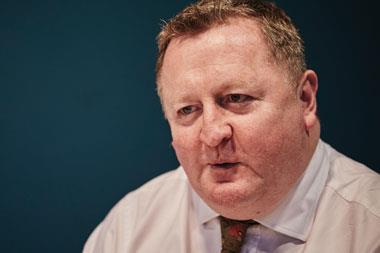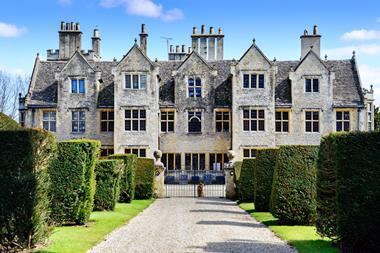MGA marries data-led analysis with good products and plenty of underwriting experience
Steve Gibson and John Inwood are not just nice guys, they know a thing or two about underwriting too.
The pair, who head MGA Avid, think they have found the perfect formula for underwriting success and running a profitable business.
A steady growth trajectory since the business was founded in 2006 by Steve Gibson (the current chief executive officer) led to private equity firm Beech Tree buying a majority stake in the company earlier this year.
The main catalyst for the transaction was the previous owner Gary Edmondson and his desire to emigrate to Canada for personal reasons, which provided Gibson and his team with an opportunity to explore options for how to take the business on to the next level.
Avid’s book is split between its travel and social housing portfolio, bringing in a combined gross written premium of about £42 million. It boasts a 5% share of the social housing market, a business class built up over a decade.
And while some would balk at the prospect of social housing, not to mention travel risks – with the prospect of massive claims when things go wrong – Avid seems to be flourishing.
So what is the recipe?

According to Gibson and Inwood, the three key ingredients are having a suitable skill set, great products, and the successful marriage of data and technology.
The latter point is the MGA’s USP perhaps as much - if not more - than the combined sixty years of underwriting experience the pair bring to the party.
Gibson explained how the model works: “A lot of what we do on the analysis side is take large volumes of raw data and put them into a meaningful picture of what a scheme or risk is.
“That ability to take 160,000 lines of data and ‘press a button’ and churn out a great report that says the account is running like this and these are the key trends.”
Avid reached this point through investment in IT technicians and systems.
“So when we sit in front of our capacity providers, they want to understand our background, but they also want to know that if they take on risks will they be profitable in the next five years.
“We can show them how we manage business on a regular basis, and show them what the track record of a business is. And we can almost do ‘what if’ scenarios. We can slice and dice the data at a granular level of detail,” Gibson said.
Complex risks
And some of the risks, especially in social housing, are significantly complex because they are over different locations, or have a lot of different units to them. The range can be five to 30,000 units, which Gibson pointed out was not everyone’s cup of tea from an underwriting point of view.
Inwood highlighted the potential complexity. [Housing associations] run a whole network of related activities such as social care, nurseries, and some might be 100 units, some 100,000 units. That complexity, size and scale isn’t to every insurer’s liking.
It’s no secret that some MGAs have been struggling recently, with some professional indemnity lines seeing significant inflation due to capacity withdrawal and the more frequent and costly claims.
But as Gibson explained, insurance is a risk game and there will be events beyond control which will affect profitability.
“What we do is look at a business over a longer period of time. The cat [atastrophe] losses are the ones that hurt, particularly in the housing association business.
“Medical claims for travel can be large depending on the part of the world you’re in. They can have a significant impact on a scheme. We try and mitigate risk as best we can, in terms of our ability to spot trends… turn certain pockets of business off before they become too harmful.”
Another element that Avid does differently is its willingness to share data with its insurance partners, Inwood said. They do so on a regular basis, he stated, to make sure there are “no surprises”.
”We are very transparent with our distributors. If I have a conversation with a distributor about performance, I’d be upset to think he’d be surprised if he got a shock because actually I’ll have spoken to him a month before and told him everything is alright,” Inwood explained.
“If he’s surprised then I haven’t done my job properly,” he added.
Why did Avid choos the private equity route?
Why did Avid go down the private equity route? Gibson explained that Avid had been looking at both PE and trade as potential partners from December. But it was PE that presented turned out to be the better option.
“The attraction on the PE side is we were excited about what we were currently doing and the growth of the business. We wanted to continue that journey. We didn’t want to change brand or change direction,” Gibson said.
We migrated quite quickly towards that PE vehicle predominantly because the story and the journey John and I wanted to take Avid on was a continuation – or even an acceleration – of what we had been doing and PE seemed to fit a bit more than trade, where you become part of someone’s culture.
With its new backer on board, the MGA hopes to increase its annual GWP from £42m to £60-£65m in the next three to four years, without the need to bring in a large number of additional staff or work its existing underwriters to death.
New lines
To take the business to the next level, Avid is also looking at entering new classes of business.
”What we are looking for are similar classes of business that we already do, which are niche/unique skill set and unique distribution.
”If we can find elements of that in the market, and we can bring them into the business using the Avid way, which is using MI (management information), and transferring data into information, that’s the kind of thing we’d like,” Gibson said.
One of those lines is social care, which partly overlaps with its social housing book already. Carers’ liability is another one, as well as property liability on the social care side too.
”There’s few players in that market,” Gibson explained. But expansion might stretch beyond the existing risk portfolio altogether. ”We’ve got a good infrastructure and skillset for those in the market who want a new challenge. If they’re absolutely new lines of business we’d look at that as well,” he added.
Hosted by comedian and actor Tom Allen, 34 Gold, 23 Silver and 22 Bronze awards were handed out across an amazing 34 categories recognising brilliance and innovation right across the breadth of UK general insurance.





















































No comments yet